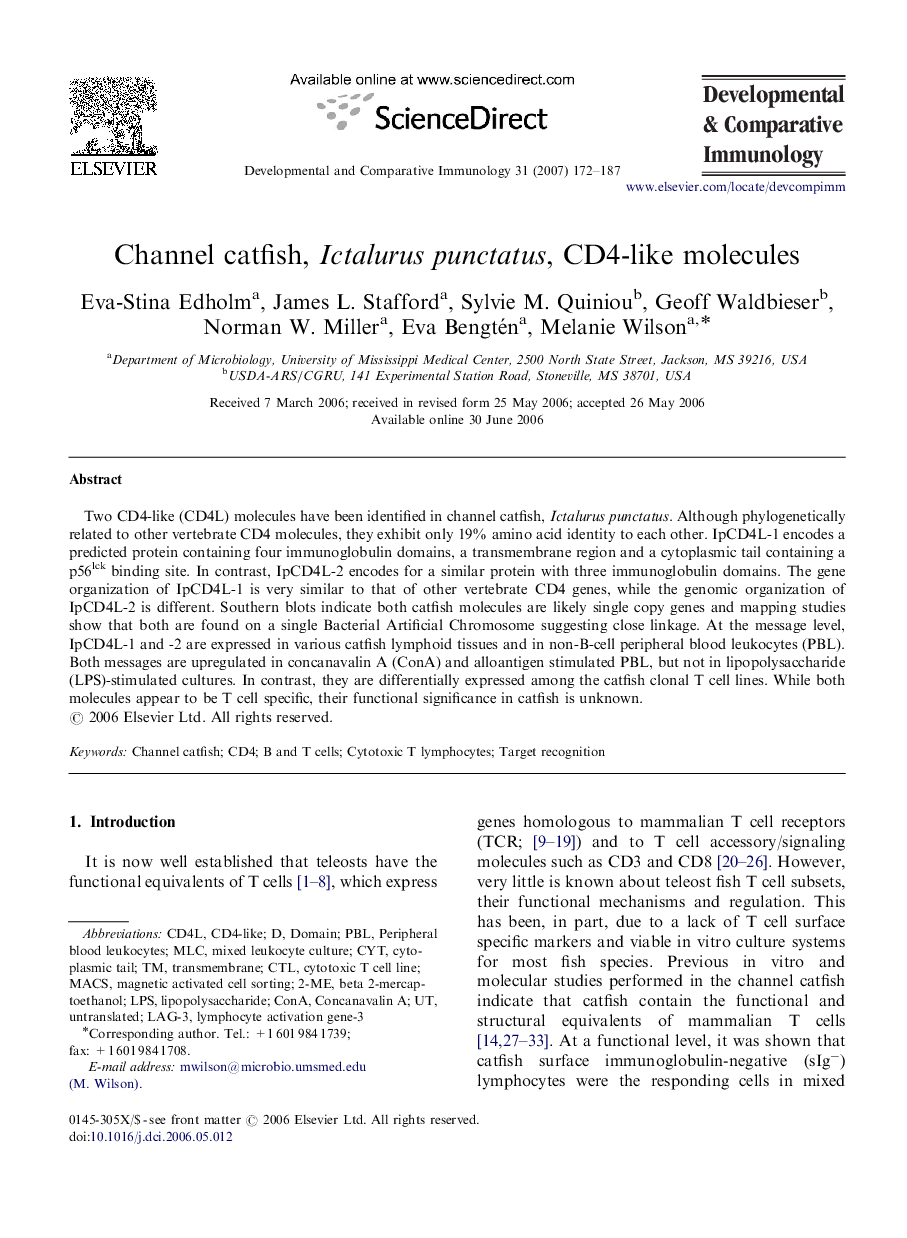| Article ID | Journal | Published Year | Pages | File Type |
|---|---|---|---|---|
| 2430453 | Developmental & Comparative Immunology | 2007 | 16 Pages |
Two CD4-like (CD4L) molecules have been identified in channel catfish, Ictalurus punctatus. Although phylogenetically related to other vertebrate CD4 molecules, they exhibit only 19% amino acid identity to each other. IpCD4L-1 encodes a predicted protein containing four immunoglobulin domains, a transmembrane region and a cytoplasmic tail containing a p56lck binding site. In contrast, IpCD4L-2 encodes for a similar protein with three immunoglobulin domains. The gene organization of IpCD4L-1 is very similar to that of other vertebrate CD4 genes, while the genomic organization of IpCD4L-2 is different. Southern blots indicate both catfish molecules are likely single copy genes and mapping studies show that both are found on a single Bacterial Artificial Chromosome suggesting close linkage. At the message level, IpCD4L-1 and -2 are expressed in various catfish lymphoid tissues and in non-B-cell peripheral blood leukocytes (PBL). Both messages are upregulated in concanavalin A (ConA) and alloantigen stimulated PBL, but not in lipopolysaccharide (LPS)-stimulated cultures. In contrast, they are differentially expressed among the catfish clonal T cell lines. While both molecules appear to be T cell specific, their functional significance in catfish is unknown.
